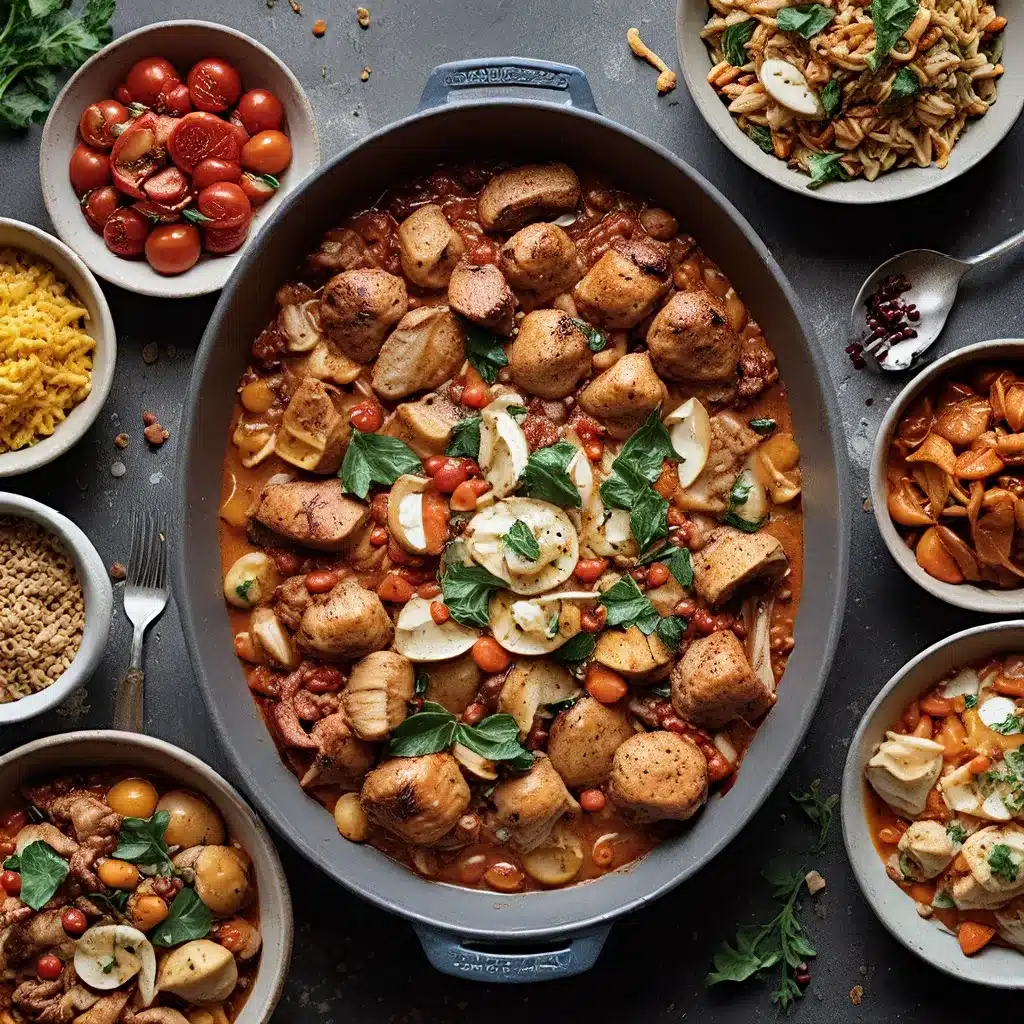
As a self-proclaimed leftover connoisseur, I have a deep fondness for the unsung heroes of the culinary world – the forgotten fragments and forlorn remains that often get relegated to the back of the fridge. You see, I believe there’s a certain nobility in letting one meal trail into the next, in finding creative ways to breathe new life into those leftover scraps and odds and ends.
Sure, the word ‘leftovers’ might evoke a wrinkled nose from some, but for me, it’s a veritable treasure trove of gastronomic potential. In fact, I’d argue that leftovers are the most joyous part of my cooking life. There’s just something so satisfying about taking those disparate elements and weaving them back together into a purposeful, cohesive dish.
It’s like a delicious game of culinary Tetris, where I get to flex my creative muscles and see how many ways I can maximize the use of every last morsel. And let me tell you, the possibilities are endless! From savory frittatas and flavor-packed fried rices to comforting grain bowls and indulgent bread puddings, there’s no shortage of clever ways to reinvent those leftover bits and bobs.
A Leftover’s Redemption Arc
Now, I know what you’re thinking – “But isn’t reheating the same old meal day after day a bit… boring?” And you’d be right, to an extent. I’m not much for simply reheating the exact same dish over and over again. Nope, I’m all about the transformation – taking those remnants and giving them a whole new lease on life.
It’s like that old saying, “the secret of a successful rechauffé is its complete disguise.” I love the challenge of combining leftovers with fresh ingredients, seasoning them up, and serving them in a way that completely obscures their former identity. It’s a culinary sleight of hand that delights the senses and the stomach alike.
Take, for example, those sad, crumbly bits of leftover sage and onion stuffing that often linger in the fridge post-holiday season. Rather than just reheating them as-is, I’ll toss them with some eggs and milk, pour the mixture into a baking dish, and voila – an utterly scrumptious stuffing frittata that’s perfect for a leisurely brunch. Or how about those last few slices of roasted turkey? Instead of just warming them up, I’ll layer them with cheese, bacon, and lingonberry jam between thick-cut bread, dip the whole thing in an egg batter, and fry it up into a decadent Monte Cristo sandwich.
The Art of Leftover Alchemy
And it’s not just savory dishes that can benefit from a little leftover love. Baked goods like muffins or scones that have seen better days can be transformed into heavenly bread puddings with the simple addition of eggs, milk, and a touch of sweetener. I once had a batch of gluten-free blueberry muffins that had gotten a bit stale, but with a little creative tinkering, they became the star ingredient in a comforting breakfast treat that had my whole family licking their plates clean.
The key, I’ve found, is to approach leftovers with a sense of playfulness and possibility. Rather than seeing them as a burden or a waste, I view them as a blank canvas waiting to be filled with culinary magic. It’s all about shifting your mindset and embracing the potential in those seemingly unremarkable remnants.
Leftovers: The New Culinary Frontier
And I’m not the only one who’s caught on to the joys of leftover transformation. In fact, the food world at large is starting to recognize the value in reducing waste and getting creative with the bits and bobs that often get tossed aside. Chefs like Dan Barber and Roy Choi have spearheaded movements that showcase the versatility of ‘imperfect’ ingredients, turning vegetable pulp and scraps into delectable dishes that challenge our notions of what’s truly worthy of the plate.
It’s an exciting time to be a leftover lover, as the stigma surrounding these culinary castaways slowly starts to fade. More and more, I’m seeing people embrace the nose-to-tail approach, finding ingenious ways to utilize every last scrap – from using chicken bones to make rich, flavorful stocks to blending wilted greens into vibrant sauces.
And you know what? I think there’s a certain poetry in this new era of culinary alliteration – where one meal can seamlessly flow into the next, each component an echo of what’s come before. It’s a beautiful cycle of creativity and conservation, a testament to the idea that sometimes the most remarkable dishes can be born out of the most humble of beginnings.
So the next time you find yourself staring down a fridge full of half-used ingredients and forlorn leftovers, I encourage you to unleash your inner alchemist. Experiment, combine, and transform – you never know what delicious discoveries might await. After all, as the old saying goes, “one cook’s trash is another’s treasure.” And in my book, that treasure trove is just waiting to be unlocked.

